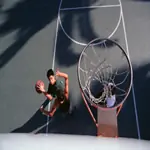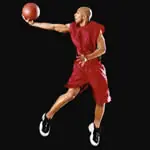At Stronger Team, we have an unparalleled commitment to being on the cutting edge of basketball specific performance enhancement. This includes staying abreast of the latest research and training methodologies as well spending money to attain the latest training tools.
When I say 'we', I am referring to my great friend and long time colleague, Blair O'Donovan. I have been working with Blair for over 10 years. He is absolutely one of the top strength and conditioning coaches on the planet. Blair is in his 7th year as the strength and conditioning coach for Gonzaga High School's basketball program. Gonzaga has a tremendous program and Blair is one of the reasons why.
Blair recently purchased the Nike+ Sportswatch GPS.
Among many innovative features, this watch can track how far a player runs over the course of a practice, workout, or game. It is an amazing technology.
As an informal experiment, Blair hooked the technology up to a few different players (two male, one female) to record the distances run during games.
Here are the results:
Kris Jenkins (forward) vs. Riverside HS
Minutes played: 31
Total Distance Run: 4.94 miles
- Warm-up: 0.92 miles (approximately 20 minutes)
- 1st Quarter: 1.09 miles
- 2nd Quarter: 1.01 miles
- 3rd Quarter: 0.95 miles
- 4th Quarter: 0.97 miles
Tavon Blackmon (guard) vs. Patterson HS
Minutes played: 32
Total Distance Run: 6.10 miles
- Warm-up: 1.3 miles (approximately 20 minutes)
- 1st Quarter: 1.20 miles
- 2nd Quarter: 1.11 miles
- 3rd Quarter: 1.28 miles
- 4th Quarter: 1.21 miles
Amanda Fioravanti (forward) vs. conference opponent
Minutes played: 27
Total Distance Run: 4.53 miles
- Warm-up: 0.6 miles (approximately 15 minutes)
- 1st Quarter: 0.83 miles
- 2nd Quarter: 0.87 miles
- 3rd Quarter: 0.91 miles
- 4th Quarter: 1.32 miles
The total distance run was actually higher than I anticipated. Including warm-up, Tavon ran over 6 miles during the course of the game! And obviously that wasn't done at a slow and steady pace. He covered 6 miles sprinting, cutting, back pedaling, sliding, accelerating, decelerating, jumping, landing, diving...all at game speed. That is an intense 6 miles!
At DeMatha, our top 6 players average playing 22-28 minutes per game. So using the data Blair gathered, and applying it to our players (which is comparable, we have a very similar style of play), it is safe to say that our top 6 players run between 4 to 6 miles each and every game. Given that we play 2-3 games per week from December to late March, our guys are racking up marathon type weekly distance logs. And that doesn't include practice. And it doesn't include offseason workouts, AAU, pre-season conditioning, etc. That is some serious volume over the course of a year!
Excessive volume will begin to cause issues if proper steps aren't taken:
- I recommend shortening practice time as the season progresses. Keep practices sharp and focused—but brief and with minimal extra running. You want your team to peak come playoff time, not be exhausted.
- Give players a day off whenever possible and appropriate. Keep in mind that a physical day off doesn't have to be a mental day off. You can watch film and shoot 100 free throws instead of a normal practice and still benefit.
- Encourage players to use proven rest and recovery techniques—like foam roll and ice baths—in addition to eating well, sleeping well, and staying hydrated. Rest and recovery is arguably the most important factor in sustaining a high level throughout the entire season.
- Communicate with players about nagging injuries and make sure they seek proper treatment. Being sore is normal and is part of being a player...but being hurt isn't and needs to be properly treated.
- Continue to strength train during the season! Purposeful strength training helps ward off the cumulative trauma caused from the excessive running volume. Proper strength training will keep the ankles, knees, hips, and core strong and durable!
On the other side of the coin... think about your 11th through 15th man. Not only do they get very little volume during the game, but they more than likely get limited volume during practice. In most 5-on-5 drills, you have your starters playing against your 2nd unit—while the 11th through 15th players stand and watch (and wait to be subbed). Point being, over the course of a week, your starting point guard may run 25 miles and your 15th man may only run 5. That is a huge discrepancy! If you ever notice that some of your reserves are sucking wind or appear out of shape...it's not their fault! They are only doing a fraction of the weekly volume.
Once our off-season workouts begin, we will make sure to collect data on those workouts as well, in an attempt to make our workouts as productive and purposeful as possible.







Discuss This Article